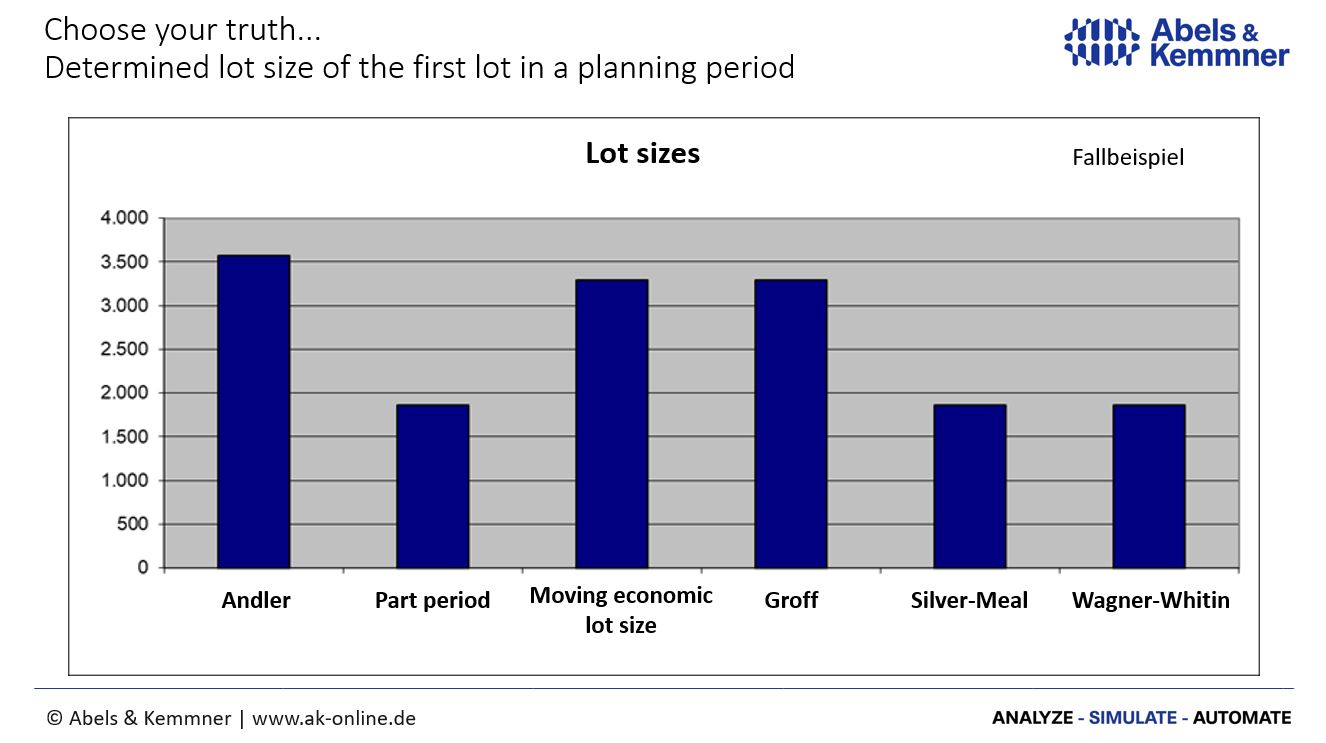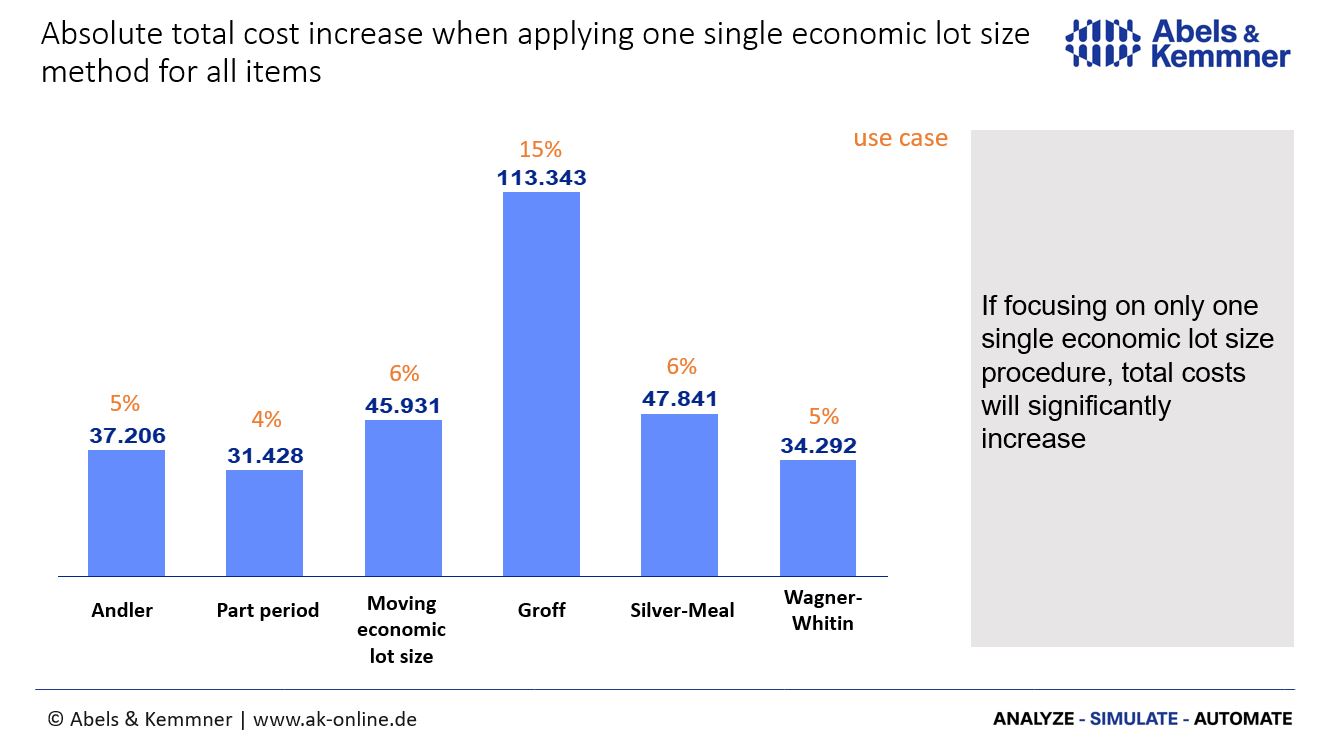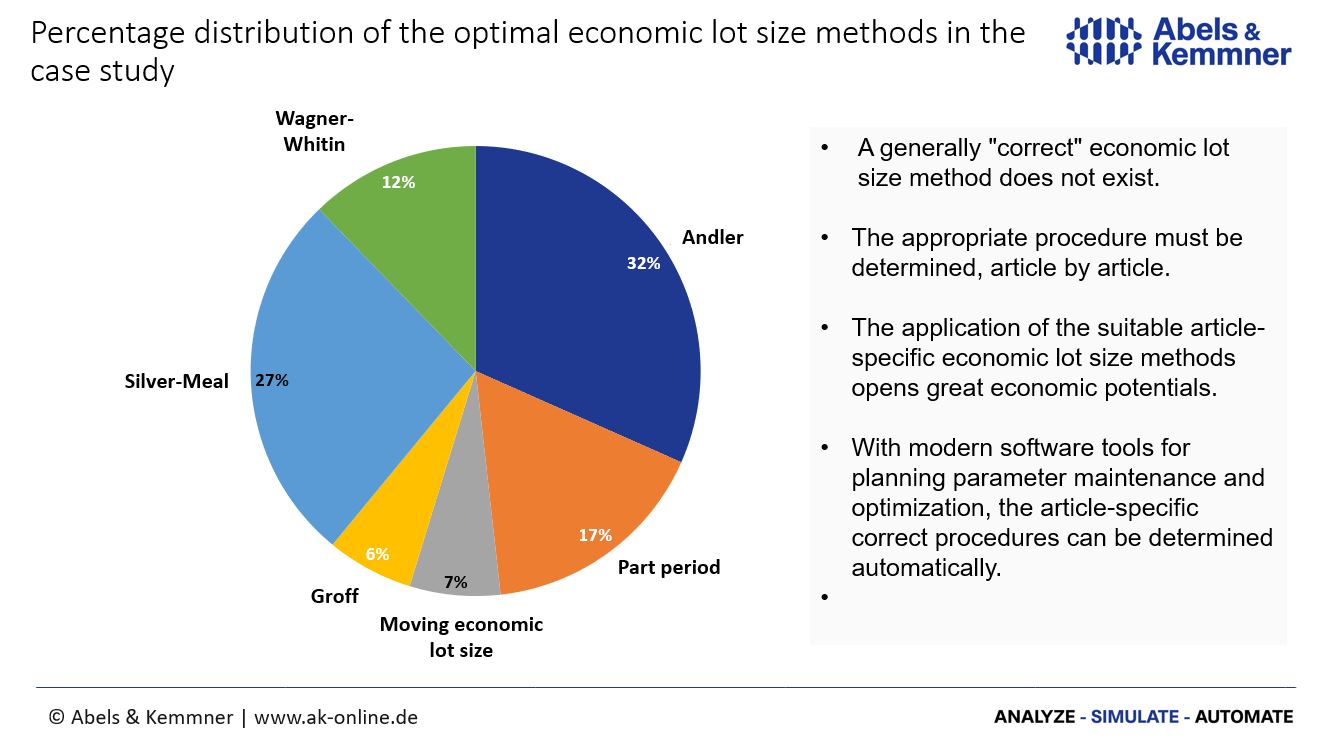Determining the optimal and at the same time most costs effective lot size has occupied experts for around 100 years. Beginning with the Andler formula in 1929, a myriad of economic lot-sizing procedures were developed, all of which aim to find the lot size at which the sum of inventory costs and lot initiation costs (ordering costs for purchase orders or set-up costs for production orders) is minimal.
How to find the economic lot sizing procedure and calculate the most costs effective, optimal lot size.
In practice, six methods are used today: the Andler method, the sliding economic lot size, the part-period method, the Silver-Meal method, the Groff method or the Wagner-Whitin method.
The Wagner-Whitin procedure is considered in theory to be the only precise economic lot-sizing method, since it assembles the required production or order lots over the entire planning horizon in such a way that the total costs over the planning horizon are minimal.
The Andler method attempts something similar, but it only looks the total demand quantity in the planning horizon, whereas Wagner-Whitin takes into account the temporal distribution of the partial demand quantities.
All other procedures listed work according to the “grubbing principle“. If material has to be reordered or remanufactured, the procedures check how many future requirements should already be ordered now to keep the total costs over this period as low as possible. Thus, when an order is placed, future requirements are “grubbed”. For the next order, a new grubbing process starts and so on.
Simulations create transparency – optimal batch size and economical batch size
As indicated above, the grubbing approach does not lead to the lowest total costs in the planning horizon. However, empirical simulations, that we carry out in many of our consultancy projects, show that the advantage of the Wagner-Whitin method is only effective for some of the items in practice, as the demand quantities and their distribution change continuously over the course of the planning horizon. However, relying on the approximation methods instead of Wagner-Whitin unfortunately does not lead to more correct economic lot sizes.
All approximation methods are based on different cost considerations and therefore often arrive at different values for the economic lot size. The deviations can be very significant (Fig. 1 ).

The “one” correct economic lot-sizing procedure does not exist
If different economic lot-sizing methods lead to significantly different lot sizes, the question arises, which method is closest to the “truth”. It is not necessary to hit the economic lot size exactly; getting close enough to the correct value, would be enough. Unfortunately, practical experience proves that none of the lot-sizing formulas calculates sufficiently accurately to rely on a single economic lot-sizing procedure for all cases.
Fig. 2 shows a case study of the cost changes that would result over all production items if one of the six most common economic lot-sizing procedures were consistently applied to all items. Regardless of which of the lot-sizing procedures is used, the total costs would increase in all cases!

In practice, this effect is mostly unknown, although it is the biggest problem in the application of economic lot-sizing procedures. Unfortunately, it is not possible to recognise the cost-increase effect shown with the usual on-board tools in practice. This requires a more powerful approach, an empirical simulation.
How to find the best cost effective lot sizing method by simulation
We carried out the above presented analyses with the help of the softwaretool DISKOVER.
DISKOVER is an ERP optimisation system that can be used, among other things, to automatically update and maintain the scheduling parameters of an ERP system. The system adjusts the scheduling parameters in such a way that the most economical scheduling proposals are generated. To find the most economical parameter settings, DISKOVER applies a simulation function with which the economic effect of different parameters can be determined on the basis of empirical values from the past.
This simulation approach can also be used to determine for each article the economic lot-sizing procedure that leads to the lowest total costs. In the use case from which the above figures originate, it was possible to reduce the sum of the annual stockholding and lot initiation costs (=total costs) by more than €200,000, corresponding to 22% of the total costs before lot sizing optimisation.
Fig. 3 shows how often which of the various economic lot-sizing procedures was identified as optimal in the analysis example.

With modern software modules for the optimization of planning parameters to the optimal economic lot size.
The considerable cost saving potentials can easily and automatically be raised with modern software modules for optimising scheduling parameters, such as DISKOVER. However, one prerequisite is still necessary: sufficiently correct cost data, i.e. stock holding cost rates as well as order costs or set-up costs must be known.
Despite legions of controllers and cost accountants in many companies, surprisingly, it is precisely this hurdle where most economic batch sizing projects fail. If the relationships between costs and economic lot sizes are understood, determining the costs is not a challenge.
What is your experience with optimal lot size and cost effective lot sizing procedures? Just contact us!
On our Knowledge-Site you will find more helpful tips.
The third part of the blog series will therefore deal with the topic of costs in economic lot sizing.

